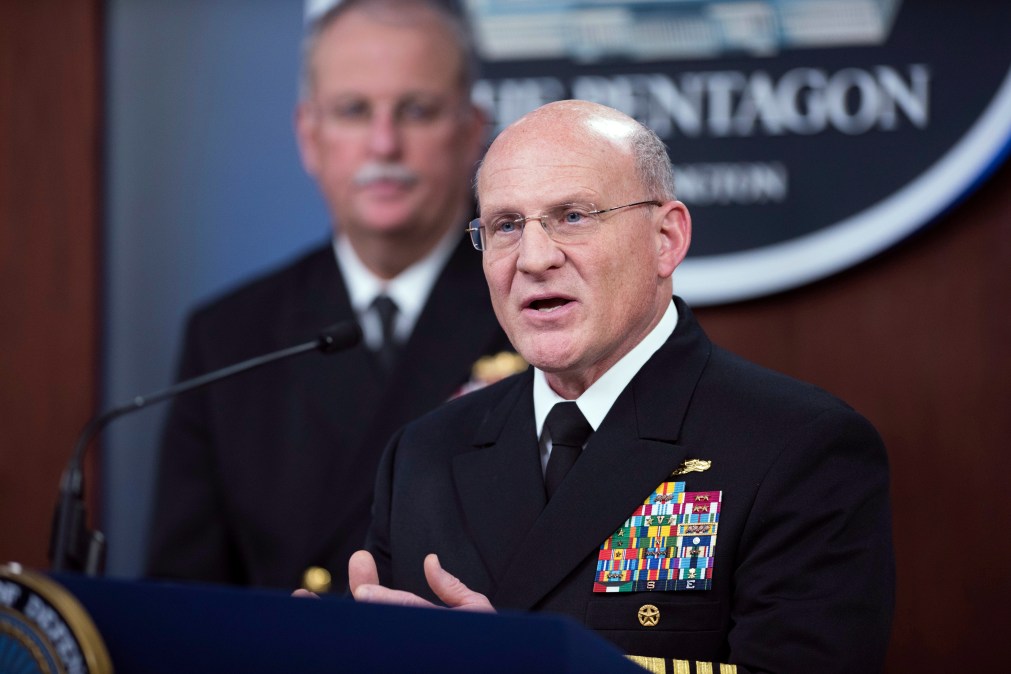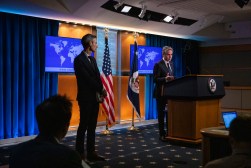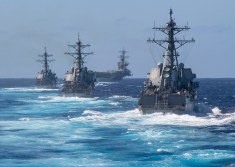Navy not reaching ‘full potential’ on emerging tech, says top admiral

The Navy’s top admiral wants to push his service to be better in 2022 after what he described as repeated failures to respond to key challenges, including the adoption of emerging technologies, he said Tuesday.
Chief of Naval Operations Adm. Michael Gilday said the Navy has failed in adopting modern and emerging technologies and facing broad cultural and leadership challenges across the force. His remarks reiterated a “Charge of Command” letter sent to Navy leadership Tuesday that stressed the need to improve to meet strategic goals like improving connectivity and embracing new technologies.
“Despite the momentum that we are building, we also have to be honest with ourselves: We are not operating to our full potential,” Gilday said Tuesday during the Surface Navy Association’s National Symposium.
Gilday’s vision shows a continuation of some of the tenets in the service’s guiding plan for 2021, which was known as NavPlan21. The document called for increasing capabilities and capacity through a more connected force, incorporating unmanned systems and promoting operations across all domains of warfare.
But in his speech, Gilday criticized commanders’ lack of self-assessment and ability to solve complex problems, like the ones laid out in NavPlan21.
“We need to get real and we need to get better,” he said.
For the Navy to reach its full potential, that means building new tech at sea and ashore, Gilday explained. The CNO floated the idea of having tactical clouds on “every single ship” that can connect back to data lakes in the U.S. He sketched a vision where ships can receive constant application updates but also have the resources to operate disconnected for weeks or months in conflict.
“While America’s need for sea control and power projection hasn’t changed, how we compete and what we fight with has,” the NavPlan21 states. “Emerging technologies have expanded the modern fight at sea into all domains and made contested spaces more lethal.”
Despite the scathing tone of the speech, Gilday did highlight a few bright spots in the Navy’s latest tech projects, saying that the Fifth Fleet’s new Task Force 59 unmanned systems group is “catching fire.” The task force plans to hold the largest unmanned exercise to date in the coming months, Gilday said.
He also said Project Overmatch — the Navy’s contribution to the Joint All Domain Command and Control (JADC2) strategy, which connects sensors and shooters to create a military Internet of Things — will deliver a joint tactical grid at the strike group level by 2023.
“When we talk about innovative areas like [artificial intelligence] and [machine learning] … we talk about Overmatch,” he said.
Many of the changes Gilday wants to see come down to fixing the Navy’s “outdated approach to institutional learning and problem solving,” he said. To improve that, Gilday said he wants to overhaul talent management to promote sailors that are self-assessing and have skills to face future conflicts.




